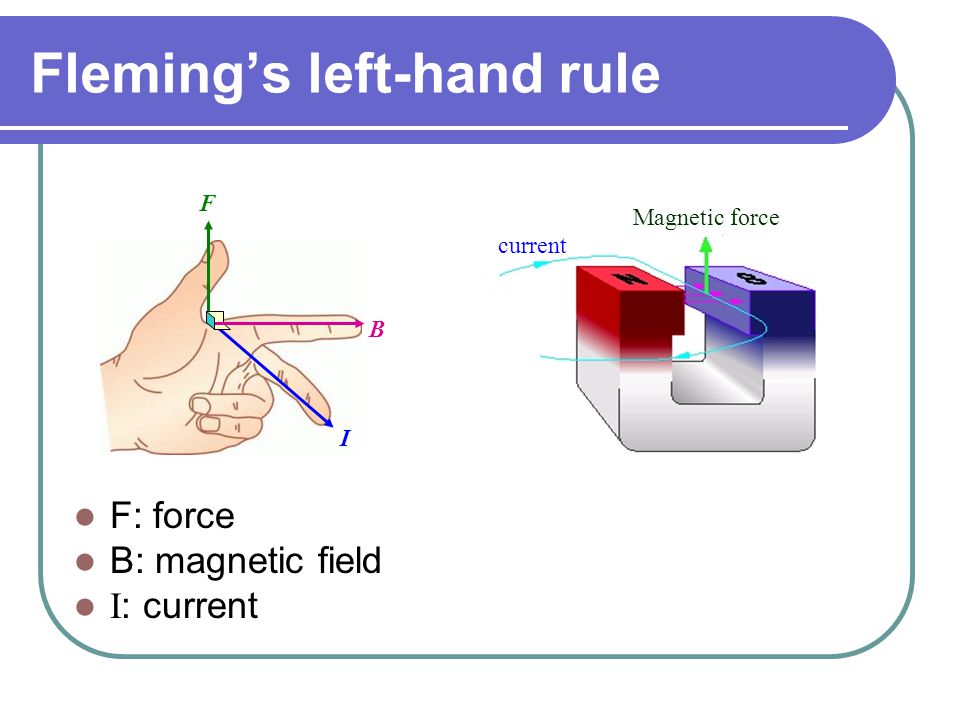Fleming's Rule, first presented in 1895, identifies the directions of magnetic field, electrical current and motion relative to each other.

When the left-hand thumb, first (or index) finger and centre (or middle) finger are all extended to point outwards at 90° to each other, then the directions of each will indicate the directions of motion, field and current passing through an electromagnetic motor.
When the right-hand thumb, first finger and centre finger are all extended at 90° to each other, then the directions of each will indicate the directions of motion, field and current passing through a dynamo.
A second mnemonic helps to recall the left/right hand differences in use:
Electric motors use electricity to move a coil and supply motive power, while dynamos convert mechanical into electrical energy (ie. they work on the reverse principle of a motor and are mostly used for large-scale electricity production). Fleming's rule therefore uses the left hand to describe positive charges (as a conventional current is the flow of positively charged moving particles) and uses the right hand to describe negative charges.
Fleming's Rule governing electrodynamics should not be confused with the limited Right-Hand Grip Rule (or Corkscrew Rule) of electromagnetics. A conventional current running through a conducting wire creates a magnetic field around the wire. The direction of the field can be found using the "right-hand grip rule". If you point the thumb of your right hand in the direction of the current, then the fingers wrapped around the conductor indicate the direction of the magnetic field lines. This is also called the "corkscrew rule", whereby the direction of thrust of the corkscrew represents the direction of current and the direction of the corkscrew turn (clockwise) is the direction of the magnetic field. (http://www.eudesign.com/mnems/flemrule.htm)
